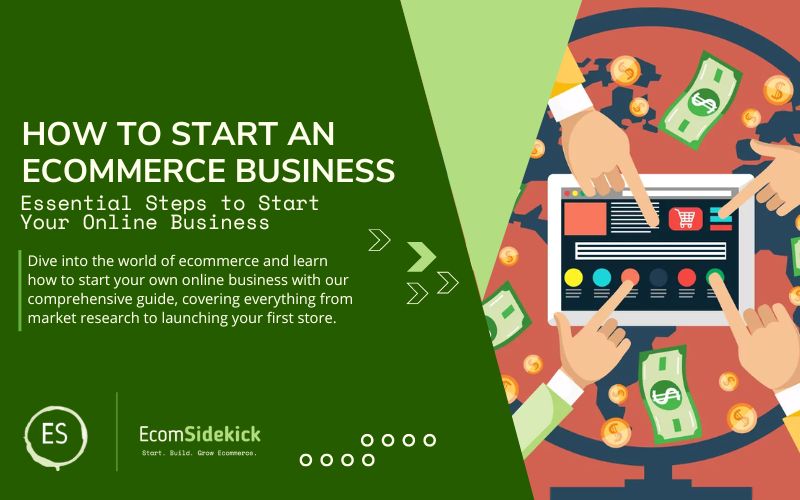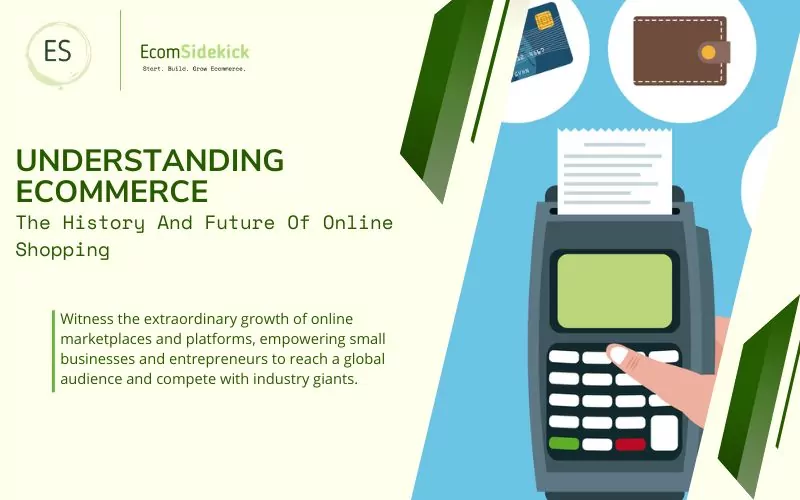Start Build and Grow an Ecommerce Business
A Simplified Approach to Ecom Success
If you’re looking to START, BUILD, or GROW an ecommerce business, you’re in the right spot. Let’s methodically pave your path into this dynamic world of online commerce. Let’s start with the 5 steps to STARTING an ecommerce business.
Easiest Way to START Your Ecommerce Company in 5 Steps
Step 1: Conceptualizing Your Ecommerce Business Idea
Step 2: Determining Your Ecommerce Business Model
Step 3: Understanding the Ecommerce Platform Landscape
Step 4: Choosing a Website Builder
Step 5: Legalizing Your Business
Step 1: Conceptualizing Your Ecommerce Business Idea
Every ecommerce journey starts with a niche that combines your passion and an untapped market opportunity. Discovering this unique idea is an exciting exploration. You want to combine your interests and fill an existing marketing gap.
Tools like Google Trends, SEMRush, Ahrefs, Amazon’s Best Sellers list, Alibaba, Facebook Audience Insights, Ubersuggest, Kickstarter, SpyFu, and Reddit can guide you in unearthing this gem.
Whether it’s artisanal vegan skincare products or an assortment of or an assortment of bespoke pet toys, aim to identify a niche that genuinely captivates you and offers an untapped market or angle on that market.
Step 2: Determining Your Ecommerce Business Model
Once your idea takes shape, the next phase involves defining your ecommerce business model.
The choices are abundant: A traditional online retail store? Perhaps a dropshipping arrangement? Subscription-based service? Or a focus on digital products or affiliate marketing?
Each model carries its distinctive advantages and challenges, so your selection should hinge on your resources, target demographic, and long-term aspirations.
Step 3: Understanding the Ecommerce Platform Landscape
Having established your niche and chosen your business model, it’s time to bring your vision to life by creating your online store.
This process is made remarkably straightforward by platforms such as Shopify, WooCommerce, BigCommerce, and Magento.
They provide a comprehensive toolkit to set up your ecommerce storefront, encompassing everything from product listing capabilities to secure payment gateways.
Step 4: Choosing a Website Builder
Your website serves as the digital embodiment of your business. Its design and functionality form the initial impression on your prospective customers.
That said, it’s essential to focus on crafting an aesthetically pleasing and user-friendly site. Website builders like Wix, Squarespace, and WordPress empower you to design professional websites with minimal technical expertise.
Step 5: Legalizing Your Business
While attending to legal formalities may not be the most exciting part of launching a business, it’s undeniably crucial.
This step involves various elements, from forming your business entity to safeguarding your brand with a trademark. Thankfully, platforms like LegalZoom and Rocket Lawyer simplify these legal intricacies, ensuring your operations are fully compliant and protected.
With the foundational elements of starting an ecommerce business in place, it’s time to shift focus. The next section, “Building an Ecommerce Site,” will guide you through designing an effective website, establishing your online store, integrating payment gateways, and more. Let’s dive in.
Learn the Basics of Starting an Ecommerce Business
Before you START your ecommerce business you will want to get familiar with the basics of starting an ecommerce store. Visit our ecommerce learning page that breaks down the most important topics for starting your ecom business.
Ecommerce Resource Guides
Easiest Way to BUILD Your Ecommerce Business in 5 Steps
Step 1: Choose Your Ecommerce Platform
Step 2: Build Through Design
Step 3: Accepting Transactions with Ecommerce Payment Gateways
Step 4: Tools to Grow Your Ecommerce Site
Step 5: Deliver Exceptional Customer Service
Step 1: Choose Your Ecommerce Platform
Selecting a formidable platform is an essential first step in building a resilient ecommerce business. Platforms like Shopify, WooCommerce, Wix, and WordPress offer intuitive interfaces coupled with the versatility to adjust to your expanding business needs.
They have many features, including customizable templates, built-in SEO and analytic tools, and more. The choice among these platforms largely depends on your business’s unique requirements. But remember, a robust platform paves the way for a formidable company.
Step 2: Designing Your Ecommerce Company
A striking design can enchant your audience, imprinting your brand identity in their minds.
Exploit design tools like Canva and Adobe Creative Cloud to develop everything from captivating logos to engaging product images and persuasive promotional materials.
And remember, a powerful design goes beyond aesthetic appeal—it enriches the user experience and catalyzes conversions!
Step 3: Setting up Ecommerce Payment Gateways
Simplifying payment processes is a vital cog in the ecommerce machinery.
Incorporating reliable payment gateways like PayPal, Stripe, and Square can significantly enhance your customer’s shopping experience, making transactions a breeze.
These platforms securely manage customer payments and handle a range of options from stored cards to mobile payments, ensuring smooth and secure transactions.
Step 4: Setting Up Your Ecommerce Tools For Growth
As you assemble your ecommerce site, always maintain a growth-centric approach. Begin with a user-friendly website structure that can quickly scale in line with your business growth.
Employ SEO tools such as SEMrush, Ahrefs, and Moz to optimize your website for search engines, thereby attracting more organic traffic.
Further, integrate email marketing tools like ConvertKit, Mailchimp or Get Response to cultivate your email list and foster enduring customer relationships.
Step 5: Setting Up Your Ecom Customer Service
Your customers are your most valuable treasure. Hence, you must use superior customer service tools like Zendesk or Freshdesk.
These platforms will help you efficiently manage customer inquiries and grievances, enhancing customer satisfaction and loyalty.
With a solid ecommerce site in place, our next move is all about growth. Let’s focus on customer acquisition strategies, conversion optimization techniques, and upselling the three key pillars for escalating your business to the next level. Buckle up as we delve into how to drive traffic and boost conversions. Onwards to growth!
Learn the Basics of Building an Ecommerce Business
Before you begin to BUILD your ecommerce business you will want to get familiar with the basics of how to build an ecommerce store. Visit our ecommerce training page that breaks down the most important topics for building your ecom business.
Easiest Way to GROW Your Ecommerce Company in 3 Steps
Step 1: Customer Acquisition Strategy – Drawing the Right Audience
Step 2: Conversion Optimization Strategy – Transforming Visitors into Buyers
Step 3: Upselling – Maximizing Your Revenue
Step 1: Develop a Customer Acquisition Strategy
In the initial phase of our expansion, we need to bring in potential customers to your online shop. The aim is to let the appropriate audience know about your store and what you have to offer.
This is where strategies like paid advertising, specifically on platforms like Google Ads and Facebook Ads, come into their own.
These platforms enable targeted ads, making sure your promotions land right in front of those most likely to become your customers. This way, instead of casting a wide net, you’re zeroing in on your potential customer base.
But let’s not overlook the magic of other channels like organic search through SEO, content marketing, social media, email marketing, influencer collaborations, and affiliate marketing. Moreover, the potency of remarketing, mobile app advertising, and comparison shopping engines can’t be underestimated.
That said, a balanced blend of paid advertising, organic search, and these other channels form the sweet spot for a complete customer acquisition strategy.
Step 2: Develop a Conversion Optimization Strategy
The next pivotal step is conversion once you’ve successfully drawn potential customers to your store. This step entails creating a seamless, hassle-free journey from when they land on your site to when they complete a purchase.
Funnels and marketing automation tools, such as LeadPages, HubSpot, and Marketo, play an integral role here.These tools automate monotonous tasks and manage leads, enabling you to efficiently guide potential customers toward making a purchase.
Moreover, conversion optimization platforms like Optimizely and Unbounce can significantly enhance your conversion rates. They allow you to experiment with and refine various elements of your website and marketing campaigns to ensure maximum conversion.
Step 3: Develop an Upselling Strategy
Upselling, the last piece in our growth strategy puzzle, is a powerful approach to maximize revenue from current customers. This tactic involves suggesting a superior or enhanced product version, or complementary products, to augment their purchase.
Think about it like this: A customer in your store is considering buying a basic coffee maker. As they head towards checkout, a pop-up window appears, courtesy of tools like ReConvert or Zipify’s OneClickUpsell. It showcases an upscale coffee maker with an inbuilt grinder, along with a premium coffee bean set, all available at a special bundled price.
Not only does this strategy increase your per-sale revenue, but it also heightens customer experience by offering greater value, enhancing their satisfaction. Additionally, platforms like Beeketing can automate such upselling efforts, adding a streamlined element to the process.
Learn the Basics of Growing an Ecommerce Site
After you have built it, now it is time to GROW your ecommerce business you will want to get familiar with the basics of how to grow an ecommerce store. Visit our ecommerce hub page that breaks down the most important topics for growing your ecom company.
Ecommerce Resource Guides
Blocks Lab [2025]
Multiple Software Review Single Software Review Software Features Comparison Table Pricing Comparison Table for Multiple Software General Table Double Headed Table Pros & Cons Book Cover & Favorite Quote Book Info (full title, author and focus) Buy book link (but do it like a button and use the word “Get” instead) HowTo Summary Image (steps)…

Unlock Success: The Best Books for Business Owners [2025]
Warren Buffet, Oprah Winfrey, and Mark Zuckerberg have something in common. While you may point to the stereotypical money factor, there’s something else to consider – all of these business tycoons are fond of reading books. Reading as much as you can on the subject allows for you to learn what do do and what…
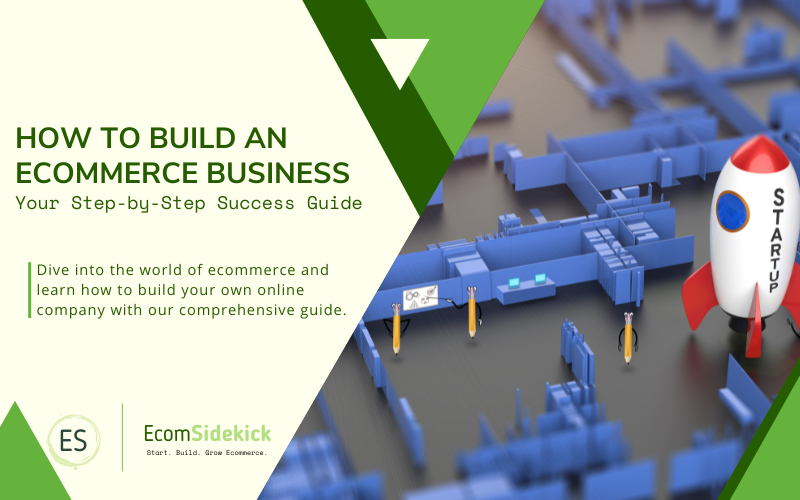
How to Build an Ecommerce Business: Your Step-by-Step Success Guide [2025]
Building your Ecommerce site is a breeze with our comprehensive guide. From platform selection to impeccable design, secure payment processes to growth-oriented marketing, and stellar customer service, we cover it all in 5 Simple steps. Immerse yourself and construct a resilient Ecommerce foundation that’s primed for success. Let’s learn how to build an Ecommerce business!…

How to Grow an Ecommerce Business: Expert Strategies for Skyrocketing Success [2025]
Growing your eCommerce journey is simple and straightforward with our detailed guide. From customer acquisition to conversion optimization, we simplify the process, saving you time and money. Learn definitively how to grow an eCommerce business. Step 1: Customer Acquisition Strategy Growing an eCommerce empire begins with a crucial first step: customer acquisition. We’re not just…
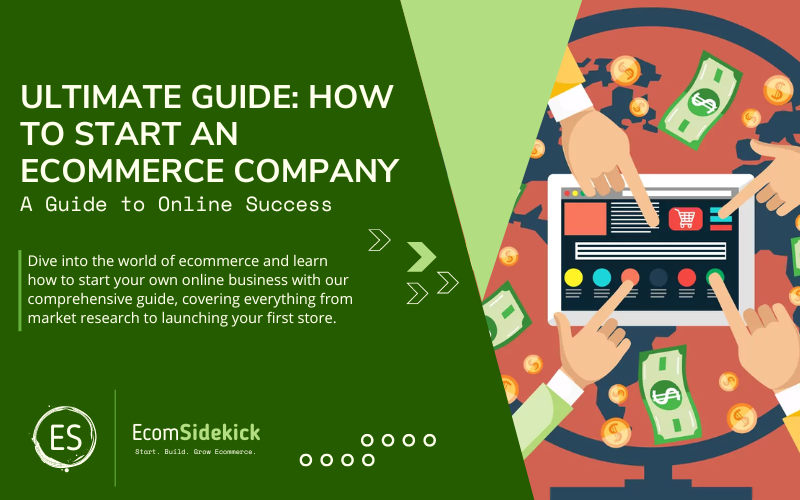
Ultimate Guide: How to Start an Ecommerce Company in 2023 [2025]
Starting your eCommerce journey is straightforward with our detailed guide. From niche selection to legalizing your business, we simplify the process, saving you time and unnecessary costs. Quickly learn how to start an eCommerce company. Step 1: Conceptualizing Your Ecommerce Business Idea Alright, let’s dig into the very first step of your journey of coming…
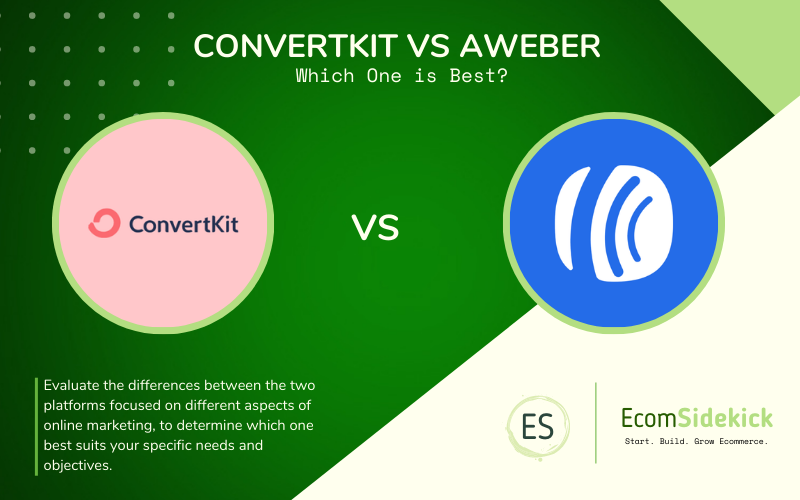
ConvertKit vs AWeber: Which One Is Best? [2025]
With the evolution of sales strategies, marketing automation has become an indispensable tool for you to succeed in your business. Gaining a more significant number of Leads and potential customers are determining factor for you to have an advantage over your competitors. In this sense, ConvertKit vs AWeber have powerful email marketing tools and several…
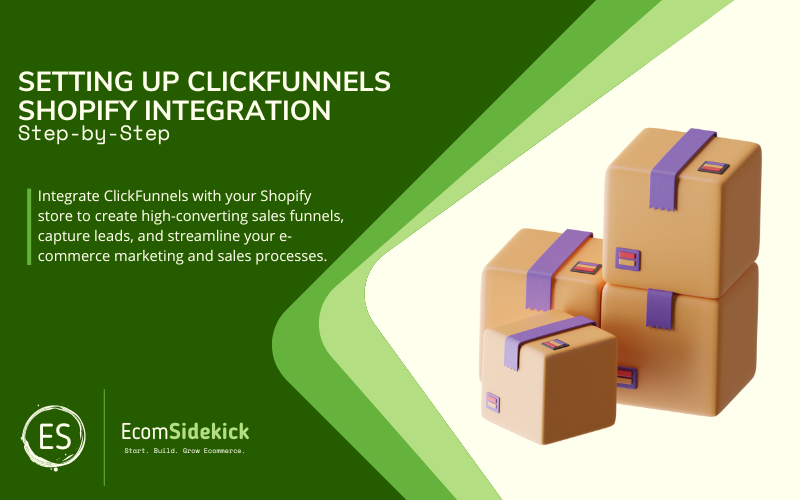
How to Use ClickFunnels with Shopify: A Step-by-Step Guide [2025]
ClickFunnels and Shopify are essential platforms for those who work primarily with the sales of digital products and services. But they can also be used by those who sell physical products. And to help you, we will show you how to use ClickFunnels with Shopify. Setting up an online shop in Shopify is simple, even…
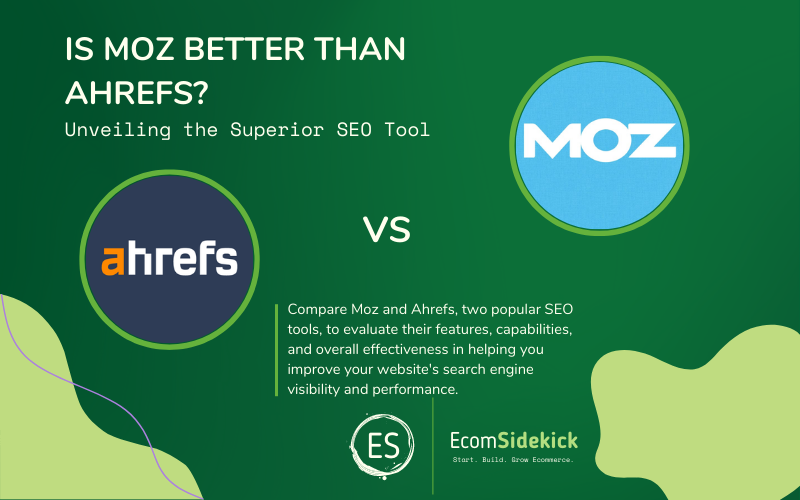
Is Moz Better Than Ahrefs? Unveiling the Superior SEO Tool [2025]
Are you a marketing prodigy with a keen sense for identifying opportunities, or a determined entrepreneur on the cusp of building your own empire? Well I great place to start is mastering the art of SEO. I know many people need clarification with Ahrefs and Moz. Naturally, these SEO tools need to be clarified, which…

Ahrefs vs Semrush: Which SEO Tool Should You Use? [2025]
Most of us have a general question about, Ahrefs vs Semrush – what is better? Stop worrying; Here, we will figure out the answer to this question. When we hear these two names, we think of two giant SEO tools. Many renowned companies all over the world use both Ahrefs and Semrush for better competitor…
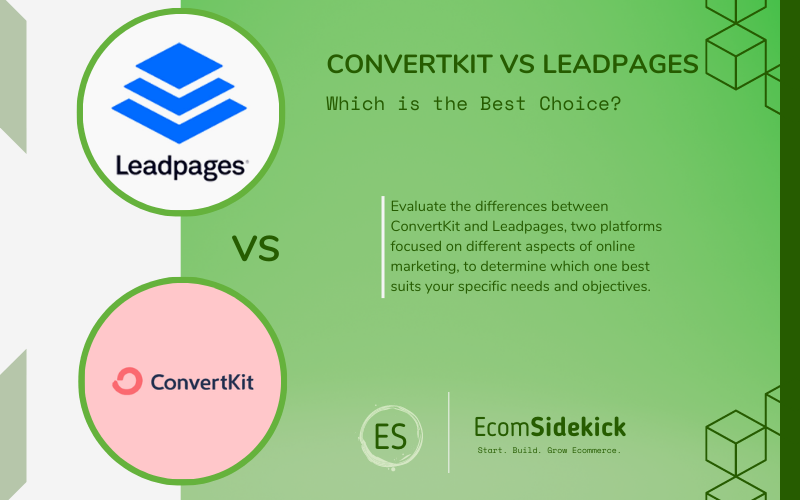
ConvertKit vs LeadPages: Which is the Best Choice? [2025]
Marketing automation tools are becoming more popular every day in the market. With technological advancement every day, if you still need to use tools to help you get more Leads, i.e., to reach potential customers, you will need to catch up to the competition. When starting a business, email marketing is a critical piece of…
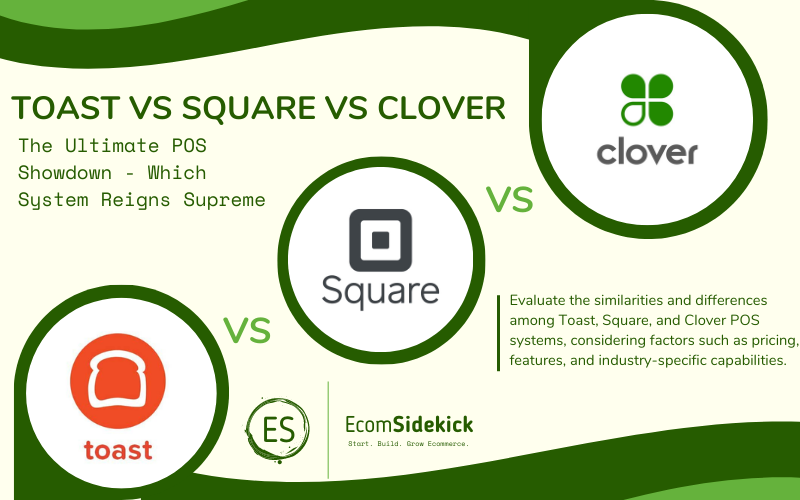
Toast vs Square vs Clover: The Ultimate POS Showdown for 2023 – Which System Reigns Supreme
Toast vs Square vs Clover: are three top-of-the-line payment processing services for small businesses. Overall, these platforms provide multiple services, including Point of Sale (POS) services, online ordering, mobile payments, and inventory management. Furthermore, these are the most user-friendly POS providers and provide great help to small businesses in running their operations smoothly. However, the…
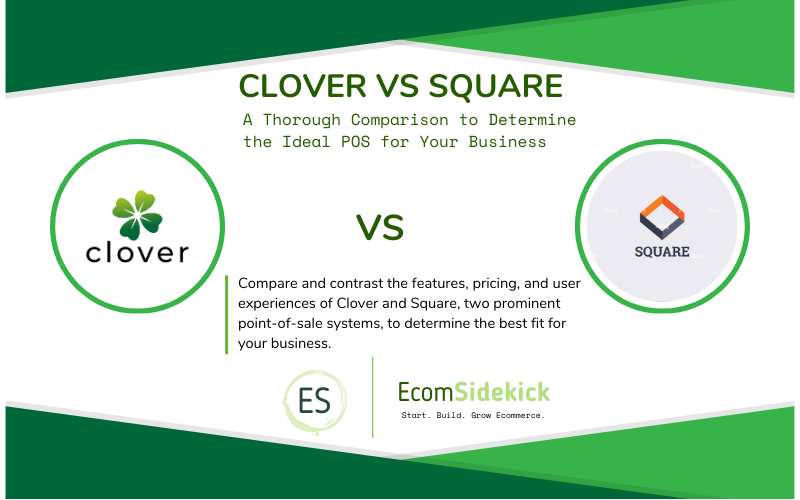
Clover vs Square: A Thorough Comparison to Determine the Ideal POS for Your Business (2023 Update)
A point-of-sale system is essential for a business selling goods in stores, online, or via mobile. Basically, the selling goods business involves several products, multiple clients, and numbers. Thus, selling goods manually can increase the chances of transactional errors. Generally, a POS system helps process customer sales, record transactions, plus analyze sales patterns. Usually, a…


